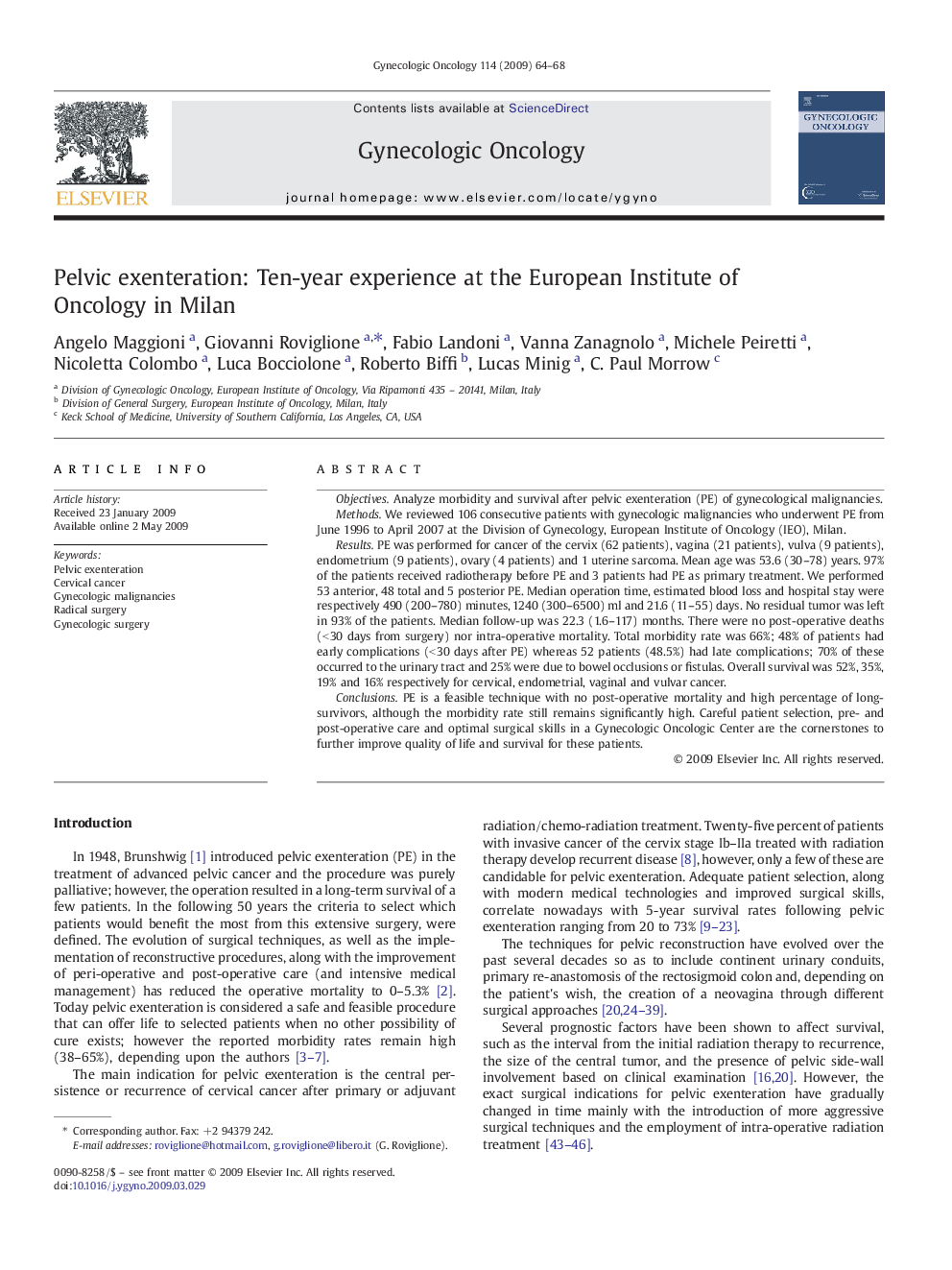| Article ID | Journal | Published Year | Pages | File Type |
|---|---|---|---|---|
| 3946027 | Gynecologic Oncology | 2009 | 5 Pages |
ObjectivesAnalyze morbidity and survival after pelvic exenteration (PE) of gynecological malignancies.MethodsWe reviewed 106 consecutive patients with gynecologic malignancies who underwent PE from June 1996 to April 2007 at the Division of Gynecology, European Institute of Oncology (IEO), Milan.ResultsPE was performed for cancer of the cervix (62 patients), vagina (21 patients), vulva (9 patients), endometrium (9 patients), ovary (4 patients) and 1 uterine sarcoma. Mean age was 53.6 (30–78) years. 97% of the patients received radiotherapy before PE and 3 patients had PE as primary treatment. We performed 53 anterior, 48 total and 5 posterior PE. Median operation time, estimated blood loss and hospital stay were respectively 490 (200–780) minutes, 1240 (300–6500) ml and 21.6 (11–55) days. No residual tumor was left in 93% of the patients. Median follow-up was 22.3 (1.6–117) months. There were no post-operative deaths (< 30 days from surgery) nor intra-operative mortality. Total morbidity rate was 66%; 48% of patients had early complications (< 30 days after PE) whereas 52 patients (48.5%) had late complications; 70% of these occurred to the urinary tract and 25% were due to bowel occlusions or fistulas. Overall survival was 52%, 35%, 19% and 16% respectively for cervical, endometrial, vaginal and vulvar cancer.ConclusionsPE is a feasible technique with no post-operative mortality and high percentage of long-survivors, although the morbidity rate still remains significantly high. Careful patient selection, pre- and post-operative care and optimal surgical skills in a Gynecologic Oncologic Center are the cornerstones to further improve quality of life and survival for these patients.
